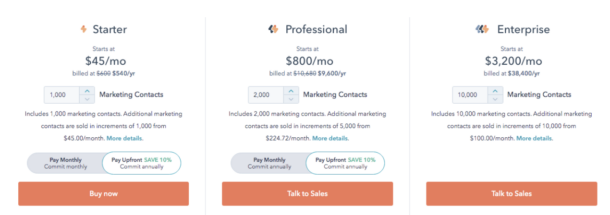SaaS pricing changes as a company grows and matures. Research states that 98% of SaaS businesses have shown positive results as an outcome of changing core aspects of their pricing policies.
2022 is the year for your business to revisit your pricing. Due to a growing market, difficult competition, and the fast-paced industry, many SaaS companies are testing and adjusting new concepts with their pricing models to meet their customers’ needs.
According to openviewpartners.com, 43% of surveyed SaaS companies are revisiting pricing more than once a year.
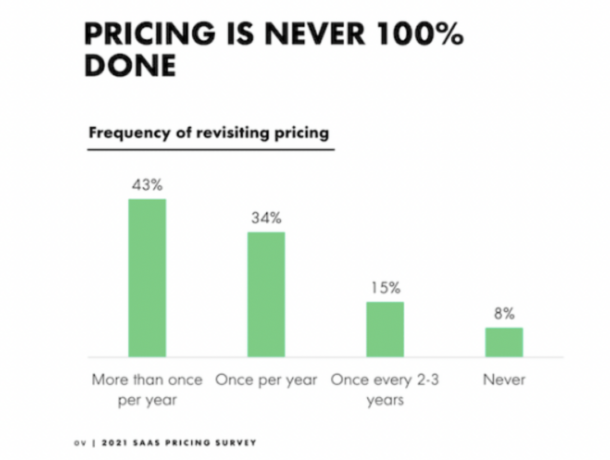
When you look at Product-Leg Growth Models for SaaS, we believe that you can learn a lot about what the market will bear by looking at alternatives (as opposed to competitors) in different segments to gauge ranges to test.
If you get too close to competition, it can quickly become a race to the bottom, but framing your solution versus alternatives allows a different pricing perspective.
Why Your Business Should Test SaaS Pricing
Price Intelligently has found that most companies spend only about 6 hours on their pricing strategy…ever.
The economy and the world of SaaS are both changing regularly. Because of these constant changes, pricing needs to be reassessed continuously. To bring in the right customers for your business, pricing has to meet their needs and budget.
Regular Pricing Strategy Refresh Drives Growth
When we think of growth tactics, most companies view this as customer acquisition. However, pricing is often one of the most overlooked and powerful growth tactics out there. Pricing is imperative to your business and has the strongest ability to impact growth.
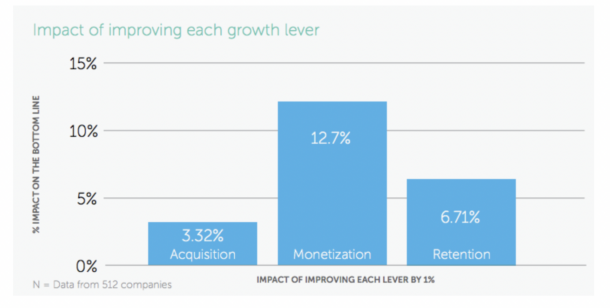
Study by Price Intelligently about growth levers and impact
Monetization drives a much larger impact on the bottom line than other growth levers. Growth means increased revenue, not simply increased customers. The way current customers are monetized is a key factor to your business’s bottom line and success.
Pricing Optimization Increases Efficiency
Price optimization is a catalyst for business efficiency. Companies that regularly adjust their prices based on the current landscape showed strong efficiency in their lifetime customer value (LTV) and customer acquisition cost (CAC) ratio.
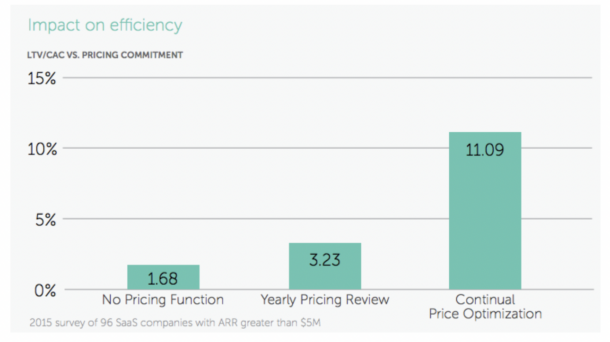
Study by Price Intelligently about pricing’s impact on efficiency
Companies who review their pricing yearly show strong growth potential, with a 3.23% LTV/CAC ratio. However, companies that continually price optimize take it to the next level at 11.09%.
Increased Payback Period for Continuous Pricing Optimization
The CAC payback period is much shorter in a business that regularly price optimizes. For a company that continuously price optimizes, the breakeven point occurs around month 4, and profitability increases from there. A company with a faster CAC payback period will overall have healthier accounting and more financial ability to drive more growth.
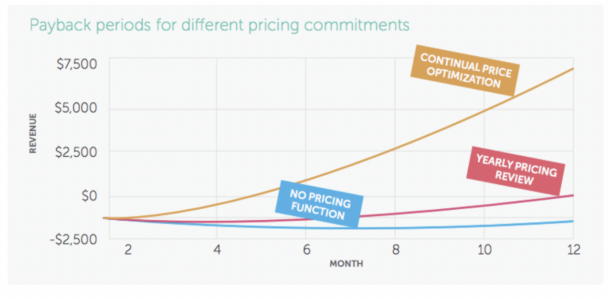
Graph by Price Intelligently indicating price optimization payback period
After one year, a business conducting continuous price optimization shows significantly higher revenue on average than businesses with no pricing function or only a yearly pricing review.
SaaS Pricing Models
SaaS businesses frequently operate out of 7 popular pricing models. These models are:
- Freemium
- Subscription based / flat-rate
- User-based
- Usage-based
- Tiered-user
- Per active user
- Feature pricing model
As of the 2021 openviewpartners.com survey of SaaS businesses, 41% of businesses use seats/users as the primary pricing metric, but usage/transaction-based pricing comes in as a close second at 39%.
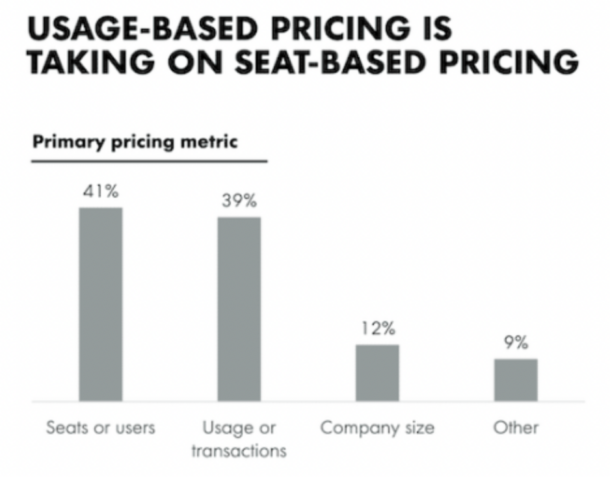
Survey results of primary pricing metric by openviewpartners.com
Freemium Pricing Model
A freemium model offers a product that’s completely free to use, with an option to opt for additional paid packages for elevated service, more features, or an ad-free experience.
By providing customers with a trial, a “lite” version of features, or an advertisement-driven platform helps get a foot in the door to encourage customers to upgrade to a paid tier. Popular examples of SaaS freemium pricing models are Slack and Dropbox.
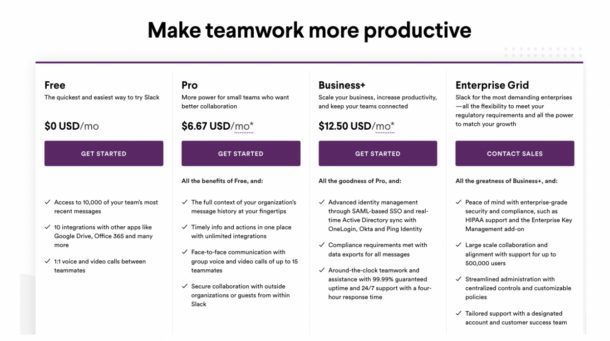
Slack freemium pricing tiers
Subscription-Based / Flat-Rate Pricing Model
Subscription-based pricing (or flat-rate pricing) harkens back to the early era of software. On a subscription-based pricing model, potential customers pay a price for the product either typically on a monthly or annual payment schedule. This payment then provides the customer all features of the product.
Fewer companies are using this form of pricing due to complexity of customers and services offered. With current trends in the SaaS space being around unbundling and customization, this model is not as popular anymore.
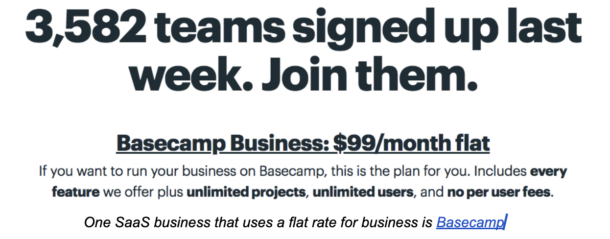
One SaaS business that uses a flat rate for business is Basecamp
User-Based Pricing Model
In a user-based pricing model, SaaS businesses charge customers on a per-user basis. Due to the ease of scale and the appeal to both large and small companies, the method has been attractive to both SaaS business and customers. The simplicity makes it very easy for SaaS businesses, particularly in the early stages, to manage revenue.
However, it’s common for customers to share accounts to save on buying more seats, and churn likelihood can be high.
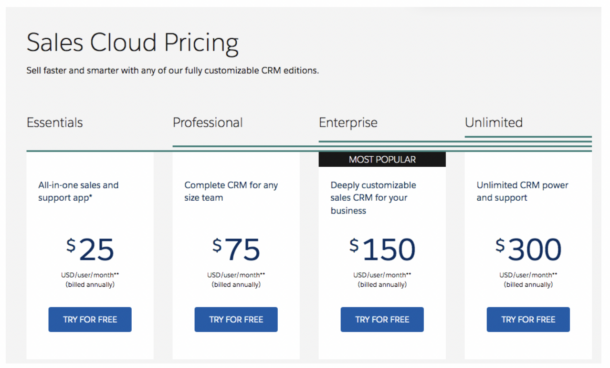
Salesforce Sales Cloud prices customers on a per user basis
Usage-Based Pricing Model
The usage-based pricing model can also be called the pay-as-you-go pricing model. The name explains it pretty well: the more you use the product, the more it costs. The less you use the product, the lower it costs.
This pricing model started out being more commonly used with infrastructure or platform software companies. Customers would be charged as a result of how much data was used, for example. However, usage-based pricing models are becoming more widely adopted with other types of SaaS companies.
The benefits are that there are typically few barriers to actually using the product, and customers easily understand how their usage affects their price. However, for a SaaS business using a usage-based pricing model, it can be difficult to predict revenue, and customers may not realize how much they’ve used a product and be surprised by their bill.
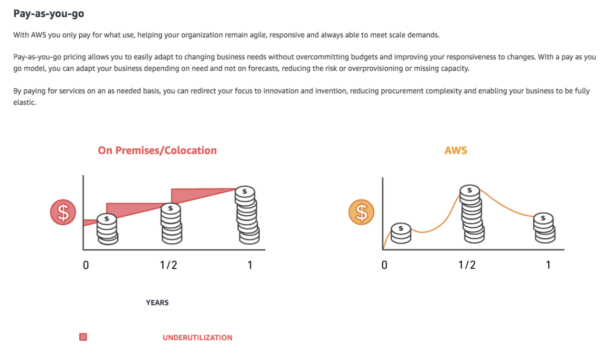
Amazon Web Services offers usage-based pricing
Tiered-User Pricing Model
Tiered-user pricing models are very popular among SaaS companies. Tiered pricing gives customers the ability to find a package that fits their needs best. Companies that use tiered pricing are able to create offerings that have a wide appeal across different customer bases.
The average amount of packages offered by SaaS companies is 3.5. At around 3 packages, these are typically created as a “low, medium, high” price point option. However, companies are free to create as many packages at different price points as they wish.
